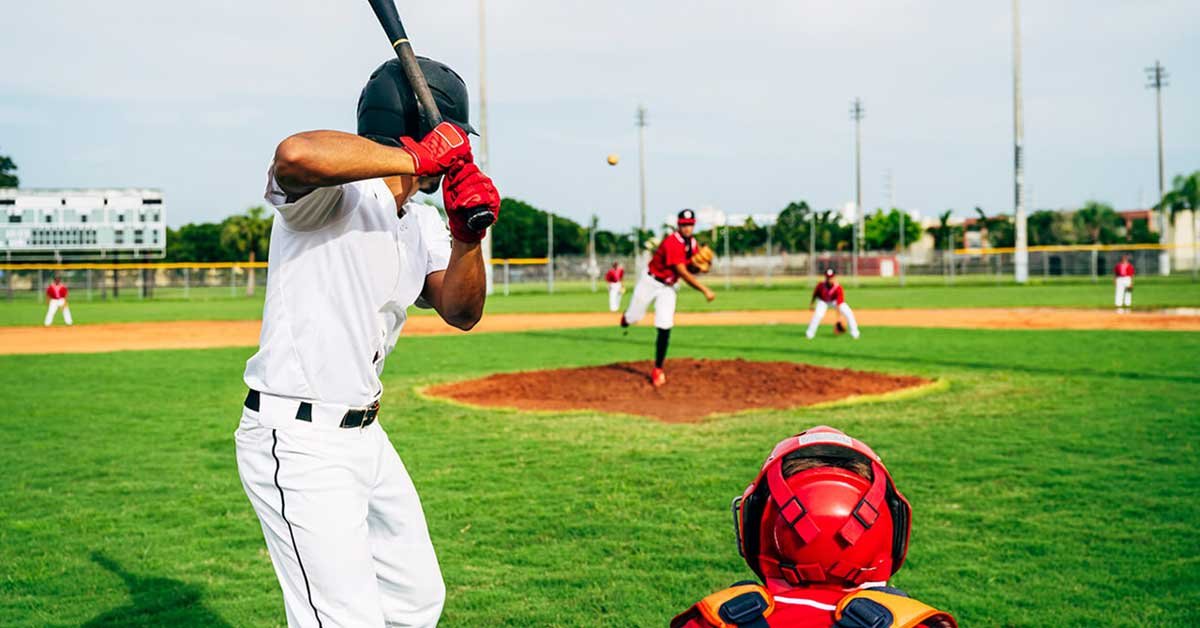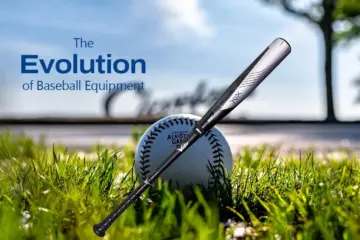Get ready to step up to the plate as we take a swing at the age old question – softball bat vs baseball bat? Whether you’re a casual player, a seasoned athlete, or simply curious about the differences, we’re here to help you navigate the choices.
In this guide, we’ll explore the unique characteristics of both bats, highlighting their pros and cons, and ultimately help you determine which one is right for you.
So, grab your favorite snack, buckle up, and get ready to unravel the mysteries of the softball bat vs baseball bat showdown. Let’s swing into action and find the perfect bat to unleash your inner slugger!
About Softball Bat vs Baseball Bat
Baseball and Softball they’re two different types of sports. It’s the bigger game in the country other than at the highest levels. Softball is the most popular activity for both men and women in the United States, while baseball is not and has never been only for males.
First, the basics softballs got a smaller footprint than baseball and the games are shorter too. Softballs are also bigger than baseballs and of course, the major difference is baseball pitchers throw overhand or a sidearm if you’re like that in softball pitchers always throw underhand.
Baseball
Baseball is considered an American pastime and is characterized by many unique features compared to other major sports. Baseball consists of two teams. They alternate between defense and attack. There are 8 position players and 1 pitcher on the defense.
On offense, 1 batter works with pitchers. As the batters reach the base, more and more attacking players appear on the pitch. Most games have 9 innings, with 3 outs in each half-innings.
At the end of the match, the team that scored more runs won. A little white ball with a red seam is used by the team.
Softball
Softball is a game like a baseball. Men, women, boys, or girls can play softball. There are three types of softball: fast pitches, modified, and slow pitches. Pitchers throw underhand in both kinds of softball. Softball shares quite a bit of features with baseball.
They alternate between defense and attack. The protective unit consists of 8 position players and 1 pitcher. The offense consists of 1 batter working with the pitcher. In softball, most games have 7 innings.
Again, each half innings consisted of 3 dismissals. At the end of the match, the team that scored more runs won. The team uses medium yellow-green balls of different seam colors.
How to Play Softball
Each team has nine to twelve players. The main purpose is to get as many players as possible to home plate. A player must generally hit the ball in order to reach home plate. There are several methods for striking. Bunts come in a variety of shapes and sizes.
Once the ball is in play, the hitter advances to first base before waiting for the next player to hit the ball to move to second base. This continues until three outs are obtained.
The team on the field then bats, while the team that was up to bat returns to the field.
How to Play Baseball
Baseball, unlike many other sports, does not have a clock. In a typical baseball game, each team has nine players on the field at any given moment.
Because substitutions are common, the team will most probably have more than nine players, but each team will only have nine players in the game at any given time. The batting team will go through their ‘lineup’ one through nine in succession.
Before the game, the team gets to choose which players will bat in which order. The better hitters are usually positioned at the front of the batting order so that they get more at-bats during the game.
Before purchasing any baseball bats – You can also read about the best youth baseball bats
Difference Between Softball Bat vs Baseball Bat
Baseball and softball have several differences. These sports appear remarkably similar but are designed quite differently, from the size of the ball to the proportions on the field to the size of the bat in the batter’s box. Baseball and softball have several significant distinctions. There are:
Length
The average baseball bat is about 33 inches from the handle to the end, and the average softball bat is 34 inches to full inches long. In softball, longer bats provide better plate protection as the batter has less time to determine whether the pitch strikes or not based on the fact that the pitch is at the same level as the home plate and closer to the home plate.
On the baseball side, it’s easier for a slightly smaller, heavier bat to go through the strike zone and make tight contact. Another interesting thing is that there is no difference at the youth level.
The average size of Little League baseball and softball is a 30-inch bat, which can be because children deal with the same issues and are almost strong with each other despite gender and sports differences.
Field Size
The regulatory softball fields have a different dimension compared to the regulatory Baseball field. In softball, the baseline is 60 compared to baseball’s 90′.
In softball, the mound of a pitcher is 46′ on the home plate. In baseball, it’s 60 ‘6’. Also, in baseball, the mound of a pitcher is often raised, not on a flat plane. The mound of the softball pitcher lies flat and on the rest of the field. Another striking difference is the surface of the game.
Often, the infield of a softball field is all dirty. The mound is described with chalk circles. In baseball, there are patches of grass in the infield. Only the baseline, the home plate area, and the pitcher’s mound are dirty.
The Handles are Different
The handle of a baseball bat is longer and thicker. At first glance, it may seem that softball and baseball bats have similar handles, but baseball bats actually have longer handled with thicker handles.
This is because of the way the bat is exposed to the ball and the difference in size and weight between softball and baseball. It also has to do with the fact that the larger and thicker grip position of the human hand will make it more comfortable for the male heater.
Everything about softball bats, especially fast-pitched softball bats, is about getting the bat out of your shoulder as quickly and easily as possible, and every section of the bat is very committed to that goal.
The Weights are Different
The weight of bats varies dramatically from fast pitch softball to slow pitch or beer league softball to fast pitch baseball, which has experienced significant development in popularity in recent years.
For the slow-pitched Adult League, the average weight of the bat is about 28 ounces. Many of the older softball slow-pitched bats are much heavier than this because they have to create all the power and distance from the pitch through their strength, bat speed, and clean contact. Fast-pitched bats are often much lighter than that.
This is because the hitters can pull the bat off their shoulders and pass through the strike zone more quickly, especially at the recreational level, where their reflexes are not as sharp as at the pro level. In softball, the hitter has far less response time since the pitcher stands closer and is on the same plane as the batter.
When it comes to adult fast pitch baseball, bats are much smaller according to league rules that state bats cannot exceed a weight and length number of -3.
Barrels are not the same
For teams in the barrel, you can significantly see that the baseball bat is thicker in the barrel than the softball opponent. In college and high school baseball, the average bat thickness is about 2-5/8 inches, while at the college level, you can see that bat barrels are about 2-1/4 inches thick.
The reason why the barrel thickness varies depends on the bat and the “sweet spot” coming into contact with the ball. This is also associated with the fact that the baseball diameter is much smaller than the diameter of a softball.
The thicker barrel gives you the best chance to contact the cleaner and gives the heaters a better chance against the pitchers. The softball bats of insomnia are lighter and easier to play the ball, which gives the hitters a better chance.
Conclusion
In conclusion, when it comes to the eternal debate of “softball bat vs baseball bat” there’s no definitive answer. It all boils down to personal preference, playing style, and the specific requirements of the game. We’ve explored the characteristics, pros, and cons of both bats, helping you better understand their differences.
Whether you prefer the speed and agility of softball or the precision and power of baseball, the right bat for you depends on your unique needs and goals. So, grab your bat of choice, head to the field, and let your swing do the talking.
Remember, it’s not just about the bat itself, but the passion and dedication you bring to the game that truly counts. Choose the bat that feels like an extension of your skills and make your mark on the diamond. Softball Bat vs Baseball Bat – the choice is yours!

– the man behind this blog, is a passionate former baseball player. With a deep love for the sport, he shares insightful baseball-related blogs, reviews, information and much more. Get ready to enhance your baseball knowledge and elevate your game with Henry’s expertise. Join him on this journey!






